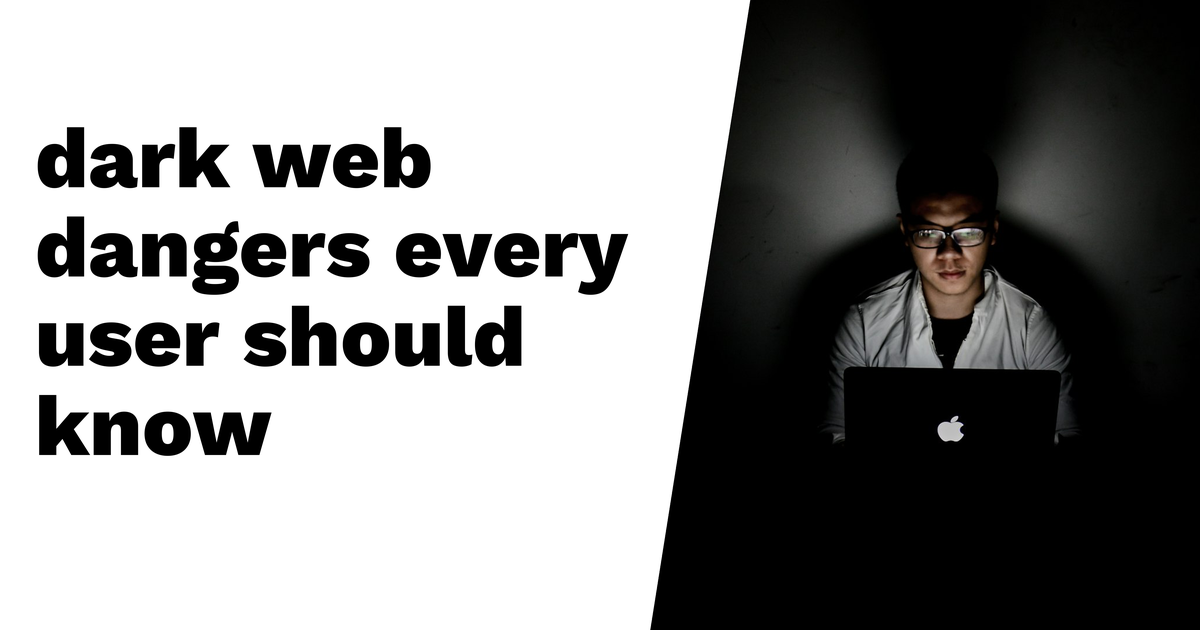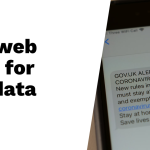The dark web remains a hidden part of the internet, requiring special software to access but often mistaken for the deep web. While it can offer safety for activists, it mostly serves illicit trade in drugs, weapons, and stolen data. As of 2023, there were about 2.7 million daily visitors to this shadowy space. Cyber threats are rising rapidly; ransomware attacks have surged by 25% in recent years, with businesses vulnerable especially mid-sized ones lacking strong defenses. This environment encourages fraud and malware spread, so users should be educated about these risks and adopt protective measures like strong passwords and monitoring services to stay safe online.
Table of Contents
- Understanding the Dark Web
- Key Statistics and Trends in 2025
- Emerging Cyber Threats from the Dark Web
- Dark Web Marketplaces
- Major Security Risks for Users
- Effective Protective Measures
- Future Outlook on Dark Web Risks
- Frequently Asked Questions
1. Understanding the Dark Web

The dark web is a hidden part of the internet that requires special software, like Tor, to access. Unlike the surface web, where you can easily find websites through search engines, the dark web is not indexed, making it much less visible. While some individuals use it to protect their privacy, such as journalists working under oppressive regimes, it is widely known for hosting illegal activities. This includes the sale of drugs, weapons, and stolen identities, attracting many cybercriminals and hackers looking for anonymity. Users often engage in forums where they discuss illicit activities, share tips, and even trade tools for committing crimes. Law enforcement agencies keep a close watch on these spaces to track illegal activities, gathering intelligence to combat cybercrime. Understanding the dark web is essential for internet users to recognize the potential dangers lurking in the digital landscape.
2. Key Statistics and Trends in 2025
As of early 2025, the dark web sees around 3 million daily visitors, showing an increasing curiosity among internet users. Despite efforts to combat illegal activities, the percentage of illicit content remains consistent, with many sites still devoted to criminal enterprises. Ransomware attacks have notably surged, particularly targeting the healthcare and government sectors, highlighting vulnerabilities in critical infrastructure. Digital currencies, especially Bitcoin, play a significant role in these transactions, making it challenging for authorities to track illegal activities. The emergence of decentralized marketplaces has simplified access to illegal goods for users, further complicating enforcement efforts. Cybersecurity firms reveal that 60% of dark web activity revolves around trading stolen data and access credentials, while forums discussing hacking techniques have seen a 50% increase in user participation. The number of active dark web marketplaces has doubled since 2023, indicating a growing demand for these illegal services. Additionally, advancements in technologies like artificial intelligence are being leveraged to enhance cybercriminal capabilities. On a positive note, increased global collaboration among law enforcement has led to significant takedowns of high-profile dark web sites, though the challenges remain daunting.
| Statistic | Value | Source |
|---|---|---|
| Daily visitors to the dark web | 3 million | N/A |
| Percentage of illegal content | Steady at 57% | Prey Project |
| Surge in ransomware attacks | 25% increase in 2024 | Bitsight |
| Digital currency usage | Widely used (especially Bitcoin) | N/A |
| Active dark web marketplaces | Doubled since 2023 | N/A |
| Participation in hacking forums | 50% increase | N/A |
| Data trading activity | 60% of dark web activity | N/A |
| Emerging technologies in cybercrime | Increasing use of AI | N/A |
| Global law enforcement collaborations | Numerous takedowns | N/A |
3. Emerging Cyber Threats from the Dark Web
The dark web is evolving rapidly, giving rise to new and concerning cyber threats. Ransomware-as-a-Service (RaaS) models are now common, enabling even those without technical skills to launch devastating attacks. These platforms offer ready-made tools that allow attackers to easily deploy ransomware, targeting businesses of all sizes, particularly those that may not have strong cybersecurity measures in place.
Phishing schemes have also taken a more sophisticated turn. Cybercriminals are using advanced tactics, including AI-generated emails, which make it increasingly difficult for victims to detect malicious intent. These schemes target both individuals and organizations, leading to significant data breaches and financial losses.
The sale of personal data, including sensitive information like Social Security numbers and medical records, has surged on dark web forums. This data is often acquired through hacking, making it easier for criminals to profit from stolen identities. Furthermore, exploit kits are becoming more prevalent, allowing attackers to quickly identify and exploit vulnerabilities in software and systems, increasing the risk for unsuspecting users.
Another emerging threat is cryptojacking, where hackers hijack computing power from compromised systems to mine cryptocurrency. This can occur without the victim’s knowledge, leading to degraded system performance and increased electricity costs.
The spread of misinformation is also being orchestrated through dark web channels, as fake news campaigns aim to sow discord and manipulate public opinion. In addition, insider threats are rising, with employees selling access to corporate networks on dark web forums, potentially leading to catastrophic breaches.
Supply chain attacks are becoming more common, as hackers target third-party vendors to infiltrate larger networks, often with devastating consequences. As these threats grow in complexity, dark web analytics tools are being developed to help cybersecurity professionals track and predict emerging risks, making it crucial for users to stay informed and vigilant.
4. Dark Web Marketplaces
dark web marketplaces are constantly changing, providing various illegal goods and services to users. For instance, Abacus was once a major player, offering drugs and hacking tools, until it fell victim to an exit scam in mid-2025. Similarly, STYX has become notorious for trafficking in stolen financial data and fraud services. Another long-standing site, Brian’s Club, specializes in stolen credit card information, making it a reliable choice for carders. The Russian Market is a hub for compromised accounts, catering to a global audience and primarily operating in English.
In a swift response to law enforcement, BidenCash was shut down after its aggressive marketing efforts caught attention. On the other hand, WeTheNorth caters specifically to Canadian users, aligning its offerings with local preferences in drug sales and other illegal goods. Although DarkMarket has been shut down, it set a precedent for how these marketplaces operate, demonstrating resilience and adaptability.
Newer platforms are increasingly adopting decentralized models to avoid detection and takedowns, which presents unique challenges for law enforcement. Escrow services are becoming more common, as they help build trust between buyers and sellers in these risky transactions. The competitive nature of dark web marketplaces encourages constant innovation, resulting in a diverse range of products and services that evolve rapidly.
5. Major Security Risks for Users
The dark web exposes users to significant security risks that can lead to dire consequences. One of the most pressing threats is malware infections, often contracted through downloads or links shared in forums. These malicious programs can range from keyloggers that steal your passwords to ransomware that locks your files. Phishing scams are also rampant, with cybercriminals impersonating legitimate services to trick users into revealing sensitive credentials. Furthermore, sharing personal information on dark web platforms can result in data breaches, placing users at risk of identity theft or financial fraud.
Accessing the dark web without proper security measures can make users targets for hackers who aim to exploit vulnerabilities in their systems. Additionally, there is a risk of encountering law enforcement agents posing as vendors or buyers, which can lead to serious legal troubles, including arrests. Financial loss is another concern, as purchasing illegal goods often comes with scams that can leave users empty-handed.
The perceived anonymity of the dark web can create a false sense of security, encouraging reckless behavior that puts users at further risk. Cyberstalking and harassment are also potential threats, especially for those who share personal details. Using public Wi-Fi networks to access the dark web increases vulnerability, making it easier for hackers to intercept sensitive information. Even casual browsing can lead to legal issues if users inadvertently access illegal content, highlighting the importance of being aware of the risks involved.
- Users are at high risk of falling victim to malware infections through downloads or links shared in forums.
- Phishing scams are rampant, with cybercriminals impersonating legitimate services to steal credentials.
- Data breaches can occur for users who share personal information on dark web platforms, putting them at risk.
- Accessing the dark web without proper security measures can expose users to hacking attempts.
- Users may unknowingly engage with law enforcement agents posing as vendors or buyers, leading to arrests.
- There’s a risk of financial loss when purchasing illegal goods, as scams are common in these transactions.
- The anonymity of the dark web can lead to false senses of security, encouraging reckless behavior.
- Cyberstalking and harassment can occur, as users may expose themselves by sharing personal information.
6. Effective Protective Measures

Staying informed about the latest threats is crucial for users to avoid dark web dangers. One effective way to enhance privacy and security is by using a VPN, which can conceal your location and online activity. Regularly updating software is essential, as it protects against vulnerabilities that cybercriminals exploit. Strong, unique passwords for different accounts help reduce the risk of credential theft, while implementing multi-factor authentication adds an extra layer of security. Utilizing dark web monitoring services can alert you if your personal information appears on illicit platforms. Education about common scams and phishing tactics can help you recognize and avoid potential threats. Regularly backing up important data can mitigate the impact of ransomware attacks, and using security-focused browsers and extensions can enhance safety when navigating the dark web. Engaging with cybersecurity communities can provide valuable insights and support for those concerned about dark web threats.
7. Future Outlook on Dark Web Risks
As technology continues to advance, the risks associated with the dark web are expected to grow in complexity and difficulty in detection. Cybercriminals are increasingly leveraging artificial intelligence and machine learning, which allow them to automate their attacks and refine their tactics. This evolution poses a significant challenge for those trying to combat these crimes. Law enforcement agencies are responding by developing new strategies to monitor and address dark web activities, but the rapid pace of change makes it hard to keep up.
International collaboration will be vital in tackling cross-border cybercrime, especially as the dark web’s user base expands. An increasing number of individuals may turn to the dark web in search of privacy, further swelling its activity and size. In response, new regulations are likely to emerge, aimed at addressing the unique challenges posed by dark web activities and protecting users from the risks involved.
Cybersecurity professionals must stay informed about the latest trends to effectively counteract dark web threats. The influence of social media could lead to novel forms of exploitation, as attackers find new ways to lure victims. Additionally, as cryptocurrency becomes more prevalent, its use in dark web transactions will complicate efforts to trace illicit activities. Ultimately, the future of the dark web will hinge on finding the right balance between users’ desire for privacy and the pressing need for security in our increasingly digital world.
Frequently Asked Questions
What is the dark web, and how is it different from the regular internet?
The dark web is a part of the internet that isn’t indexed by search engines, making it hard to find. It’s different from the regular internet, where most websites can be accessed easily through searches.
Why should I be concerned about the dark web as an internet user?
Concerns about the dark web include exposure to illegal activities, hacking attempts, and the risk of personal information being sold or used for malicious purposes.
How can I tell if my data is on the dark web?
You can use dark web monitoring services that scan those areas for your email addresses or personal information, alerting you if your data is found.
What steps can I take to protect myself from dark web dangers?
To protect yourself, use strong passwords, enable two-factor authentication, avoid sharing personal info online, and be cautious with public Wi-Fi networks.
Is it safe to browse the dark web?
Browsing the dark web isn’t usually safe, as you may encounter illegal content and scams. It’s important to have proper security measures in place if you decide to explore.
TL;DR The dark web, often associated with illegal activities, poses significant risks for internet users in 2025. With rising threats like ransomware and data breaches, the number of daily dark web visitors continues to grow. Popular marketplaces, such as Abacus and STYX, facilitate cybercrime through illicit trades. To protect against these dangers, users should prioritize education on cybersecurity, make use of monitoring services, and adopt best practices like multi-factor authentication. Staying informed and proactive is crucial as dark web tactics continue to evolve.





